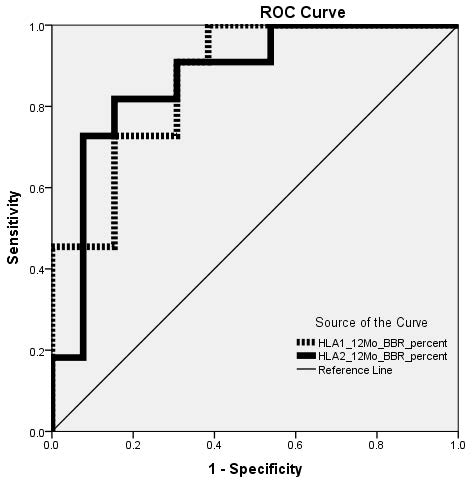Breadth of HLA-Specific B Cell Reactivity and Frequency Assessed by a Novel Multiplex Bead Based Assay Predicts and Correlates with Rejection in Kidney Transplant Recipients.
Northwestern University, Chicago.
Meeting: 2016 American Transplant Congress
Abstract number: C34
Keywords: Alloantibodies, B cells, HLA antigens, Rejection
Session Information
Session Name: Poster Session C: Antibody Mediated Rejection: Session #1
Session Type: Poster Session
Date: Monday, June 13, 2016
Session Time: 6:00pm-7:00pm
 Presentation Time: 6:00pm-7:00pm
Presentation Time: 6:00pm-7:00pm
Location: Halls C&D
Introduction: Recipients with broad sensitization to HLA defined by a high percentage of Panel Reactive Antibodies (PRA) are at higher immunologic risk for poor graft outcomes. Little is known about the prevalence and impact of circulating HLA-specific B cells (HSB) on graft outcomes. Utilizing a novel multiplex bead based assay to identify HSB, we studied the circulating HSB in kidney transplant recipients and correlated with development of acute rejection (AR).
Methods: PBMC from kidney transplant recipients (n=24; 13 with no AR and 11 with AR) were incubated with single antigen HLA-coated multiplexed beads (SAB) (One Lambda) for HLA class I and II. Using multiparameter flow cytometry, HSB were identified by the formation of HLA Bead-B-cell Rosettes (BBR). HSB frequency & specificity were analyzed. HLA-specific B cell breadth of reactivity or Panel Reactive B cells (PRB) was defined as the percentage of total SAB forming BBR.
Results: Class-I HSB (2.931 ± 0.4355% vs 1.231 ± 0.2381%) and Class-II HSB (1.861 ± 0.1719 vs 1.090 ± 0.1452) frequencies at 12 months post-tx were higher in recipients with AR compared to no AR. HLA-I PRB at pre-tx (r=0.444, p=0.03), 3 months (r=0.279, p=0.187) and 12 months (r=0.502, p=0.012) post-tx and HLA-II PRB at pre-tx (r=0.426, p=0.038), 3 months (r=0.448, p=0.028) and 12 months (r=0.514, p=0.01) post-tx correlated with development of AR. [figure2]
ROC area was 0.867 for predicition of AR with either Class-I and II HSB at 12 months.
Conclusion: The degree of B cell sensitization, as assessed by Panel Reactive B cells (PRB), for both HLA Class I and II pre-transplantation predicted acute rejection. PRB at 12 months correlated with acute rejection. Further, Class I and II HLA-specific B cell frequency in peripheral blood at 12 months post-transplant also correlated with acute rejection. These data suggest that circulating B cells specific for HLA antigens assessed by this novel assay serve as potential biomarkers for risk-stratification of kidney transplant recipients.
CITATION INFORMATION: Akl A, Ilyas Z, Traitanon O, Gallon L, Tambur A, Ansari M. Breadth of HLA-Specific B Cell Reactivity and Frequency Assessed by a Novel Multiplex Bead Based Assay Predicts and Correlates with Rejection in Kidney Transplant Recipients. Am J Transplant. 2016;16 (suppl 3).
To cite this abstract in AMA style:
Akl A, Ilyas Z, Traitanon O, Gallon L, Tambur A, Ansari M. Breadth of HLA-Specific B Cell Reactivity and Frequency Assessed by a Novel Multiplex Bead Based Assay Predicts and Correlates with Rejection in Kidney Transplant Recipients. [abstract]. Am J Transplant. 2016; 16 (suppl 3). https://atcmeetingabstracts.com/abstract/breadth-of-hla-specific-b-cell-reactivity-and-frequency-assessed-by-a-novel-multiplex-bead-based-assay-predicts-and-correlates-with-rejection-in-kidney-transplant-recipients/. Accessed December 16, 2025.« Back to 2016 American Transplant Congress
